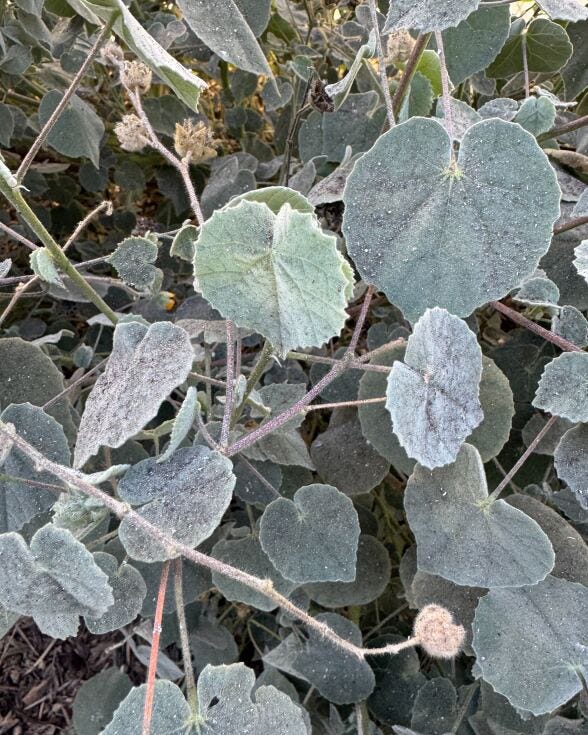Now what? Post Fire Gardening
I missed my deadline for this newsletter two weeks ago.
I have the best excuse: I’m currently a wildfire evacuee. But I am one of the lucky ones, who still has a house standing and just smoke remediation to navigate.
Like many Pasadena/Altadena and Pacific Palisades residents, we are all on the struggle bus trying to figure out what’s next? Whether it’s rebuilding our lives, our communities or just simply a sense of home. Gardens that were once a place of pride or a refuge from the world are laden with dust and debris. In the aftermath of the Eaton Fire, I have been flooded with phone calls and text messages from gardeners on what to do with their beloved produce covered with smoke soot and their ash field gardens. As you can imagine, I don’t have all the answers, but I have a few.
Say Goodbye
While ash from a distant forest fire is generally harmless, urban fires are so more complicated. The safest approach is to say goodbye to your beloved plants and throw them out. It’s better to sacrifice a harvest than to risk consuming potentially harmful contaminants.
Test Your Soil
After a fire, you can check for soil contamination by collecting soil samples from your garden and sending them to a lab. Before taking samples, draw a map of your food growing area and label it with the spots where you took your samples from. Mapping your food growing area and soil sample spots is a good idea so you can correlate your test results, and identify spots of concern in case you need to do more testing, and guess what? It can save you time, money, and help you understand the ground conditions!
The cheapest place I was able to find was the Cornell Lab. You mail in samples and they charge $30 per sample tested for heavy metals. Here is a link, the heavy metals option is at the bottom on the page.
Ask your lab for a heavy metals panel that includes lead, cadmium, arsenic, nickel and mercury. Heavy metals tests typically cost under one hundred dollars per sample. Tests for dioxin and other organic chemicals that may be present in smoke can be hundreds of dollars per sample. If heavy metals are present in your soils, there is a greater chance other contaminants may also be present. Contaminants detected in post-fire soil testing may have been present there before the fire. You will not know if contaminants are present as a result of fire smoke deposits on your produce or soils unless you have had your soils tested prior to a local fire, or unless you have your produce tested after a nearby fire.
Contain Your Soil
Mulch your beds with straw and use sub-surface irrigation (such as drip-irrigation) to prevent the up-splashing of soil particles onto the under-sides of leaves, especially leafy green vegetables or other plants’ parts. A landscape fabric or weed cloth can also be used as a barrier between local and imported soils.
Amend and Enrich Your Soil
Regularly amend soils with compost and add “clean” soil to your food growing beds to dilute contaminants. Some research suggests that adding compost to soils increases soil microbial and fungal populations, which may help break down organic chemicals (like dioxins) in soils, and would be appropriate for low-level contamination, while composts high in phosphorous may help bind lead and cadmium in soil. Wear a face mask and minimize airborne dust when turning soil.
Decontaminate Your Garden Soil
Whether by absorbing, capturing or breaking down toxic materials, certain plants can actually help remove pollution from your soil. Believe it or not, there is an efficient and ecological way to clean contaminated soil: plants.
This technique is known as phytoremediation. "It works by using the metabolism and natural properties of plants that extract, immobilize or break down pollutants on the surface of the soil," explains Frédéric Pitre, a researcher at the Plant Biology Research Institute at the University of Montreal. Researchers have figured out specific plants that can clean up certain toxins. Some of these include:
Sunflowers have been used to absorb radiation on the site of the Chernobyl nuclear disaster.
Mustard greens can absorb lead and have been used on playgrounds in Boston to keep kids safe.
Corn can absorb lead and cadmium in soil. This plant can also work well in a soybean rotation.
Many types of mushrooms can remove toxins from soil, including oyster, shiitake, and reishi mushrooms. This process is called mycoremediation.













